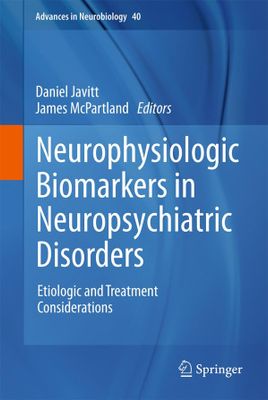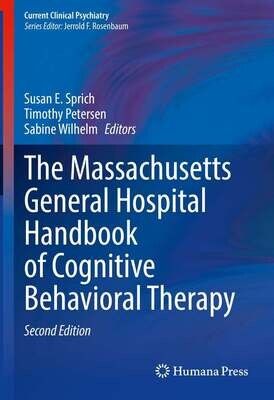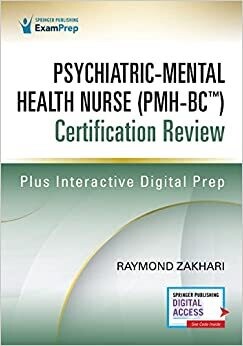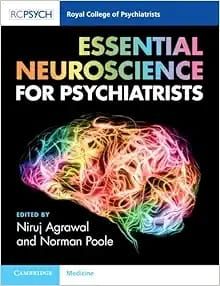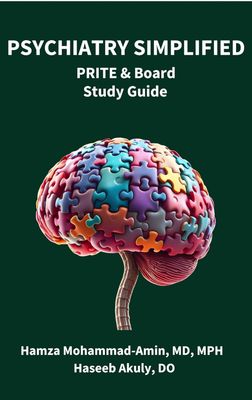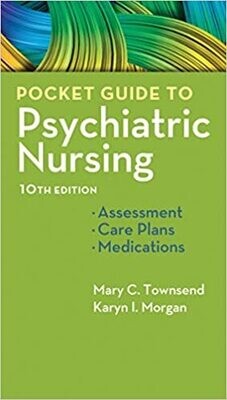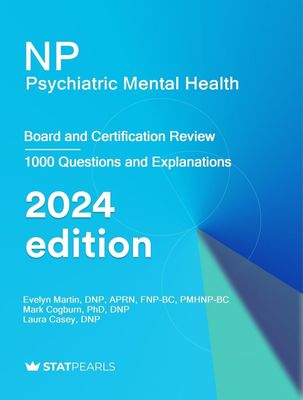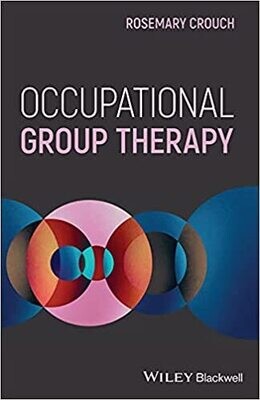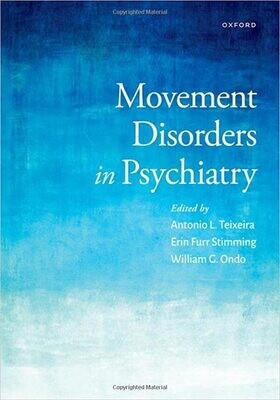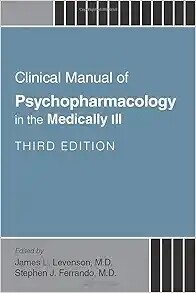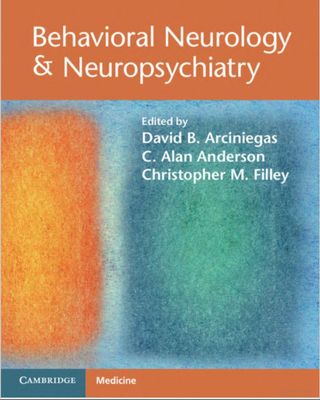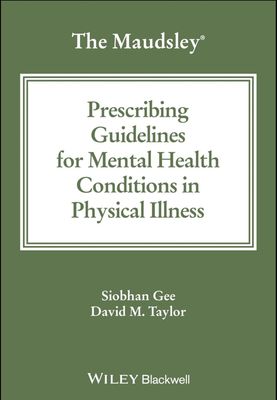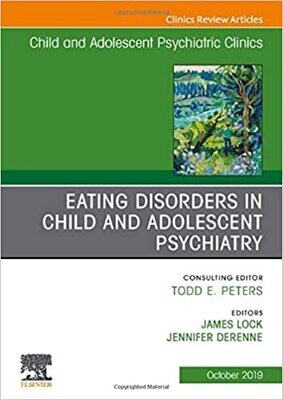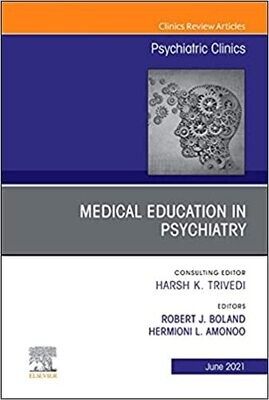
Explore huge range of books of your medical specialty in below categories
Neurophysiologic Biomarkers in Neuropsychiatric Disorders - Etiologic and Treatment Considerations (Advances in Neurobiology, 40)
Neurophysiologic Biomarkers in Neuropsychiatric Disorders - Etiologic and Treatment Considerations (Advances in Neurobiology, 40)
Introduction to Volume: Biomarkers in Psychiatry
The Importance of Public-Private Partnerships
Biomarker Methods
Applications to Schizophrenia
Applications to ASD
Cross-Diagnostic Methodologies
Other Disorders
Challenges to Biomarker Development
Conclusion
References
Contents
About the Editors
Part I: Government and Pharma Perspectives on Biomarker Development
Biomarker Methodologies: A NIMH Perspective
1 Introduction
1.1 Biomarkers as Drug Development Tools and Context of Use (COU)
2 Early Large-Scale Consortia Efforts in Biomarker Discovery—Generating Resources and Tools
2.1 The NIH MRI Study of Normal Brain Development
2.2 Examples of Ongoing Efforts to Measure Brain Development Longitudinally
2.3 Establishing Moderators and Biosignatures of Antidepressant Response for Clinical Care for Depression (EMBARC)
2.4 NIMH Fast Fail Program
3 Biomarker Technologies and Methods in the Context of Clinical Research in Psychiatry
3.1 Brain-Based Biomarkers
3.1.1 PET Radiotracers
PET and SPECT Radiotracers as In Vivo Biomarkers of Neuroinflammation
3.1.2 fMRI
fMRI Imaging Is Being Implemented in Early-Stage Clinical Trials as Quantitative Pharmacodynamic Measures
Translational Neuroscience Computational Evaluation of a D1R Partial Agonist for Schizophrenia (TRANSCENDS) Study
Dose-Response Relationship and Pharmacokinetics of Intranasal Oxytocin on Neural Impact in Youths with High Levels of Irritability
MRI as a Potential Stratification Marker
Important Considerations When Performing MRI Studies
Establishing Standards
Recent Publication Highlighting Some of the Current Limits of MRI in Clinical Studies
3.1.3 EEG Biomarkers
EEG as a Measure of PD in Clinical Trials
Slow Wave Induction by Propofol to Eliminate Depression (SWIPED)
EEG as Translational PD Measures
EEG as a Stratification Measure
3.1.4 MEG
3.1.5 MRS
3.1.6 Cognitive Measures
The Penn Computerized Neurocognitive Battery (CNB)
The Measurement and Treatment Research to Improve Cognition in Schizophrenia (MATRICS) Consensus Cognitive Battery (MCCB)
The Virtual Reality Functional Capacity Assessment Tool (VRFCAT)
3.1.7 Genomic Biomarkers
Polygenic Risk Scores (PRSs)
3.2 Blood-Based Biomarkers
3.2.1 Single Blood-Based Biomarkers
Neurofilament (Nf)
3.2.2 Proteomics and Metabolomics Approaches for Disease Profiling
Use of Targeted Multiplex Proteomic Strategies to Identify Plasma-Based Biomarkers in AD
Plasma Aβ as a Predictor of Amyloid Positivity in AD
4 Emerging Areas of Biomarker Development
4.1 Digital Health Technology-Derived Measures
4.2 Multicomponent Biomarkers
4.2.1 Examples of the Potential Uses of Multicomponent Biomarkers
Plasma-Based Biomarkers for Differential Diagnosis of AD, FTD, and Dementia with Lewy Bodies
Combining Plasma p-tau and Other Accessible Measures to Evaluate Progression to AD Dementia in Patients with Mild Cognitive Impairment (MCI)
Multi-Omics Approaches for Monitoring Disease Progression and Treatment Response
Digital Biomarkers of Disease Progression
4.2.2 Analytical Challenges
5 Biomarker Development Through Public-Private Partnerships
5.1 The FNIH Biomarkers Consortium
5.1.1 The Autism Biomarkers Consortium for Clinical Trials (ABC-CT)
5.1.2 Inflammatory Markers for Early Detection and Subtyping of Neurodegenerative and Mood Disorders
5.1.3 Neurofilament as a Blood-Based Biomarker of Neurodegeneration in Familial Frontotemporal Degeneration
5.1.4 Precompetitive Development of an SV2A PET Tracer as a Biomarker of Synaptic Density in AD
5.2 FNIH Accelerating Medicine Partnership® Program
5.2.1 Accelerating Medicines Partnership® Schizophrenia (AMP® SCZ)
6 Considerations—Data Rigor
7 NIMH Priorities and Funding Opportunities for Biomarker Research
References
Neural Circuitry-Related Biomarkers for Drug Development in Psychiatry: An Industry Perspective
1 Biomarkers in Drug Development
2 Circuitry Biomarkers
3 Imaging Biomarkers
4 Imaging Biomarkers in Drug Development for Psychiatry
5 Neurophysiology Biomarkers
6 Neurostimulation
7 Clinical Trial Readiness
8 Disease Staging
9 Translational Approach
10 Wearables and Digital Approaches
11 Concluding Remarks
References
Public–Private Partnerships for Neuropsychiatric Drug Development: A Perspective
1 Background
1.1 Process of Developing the PPP and Range of Stakeholders
1.2 Primary Deliverables
1.3 Management and Governance Structures
1.4 Level and Sustainability of Funding
1.5 Data Access and Sharing
2 ERP Biomarker Qualification Consortium
3 Schizophrenia Spectrum Biomarker Consortium (SSBC)
4 Discussion
References
Part II: Biomarker Methodologies and Translational Approaches
Methods for and Use of Functional Magnetic Resonance Imaging in Psychiatry
1 Introduction
1.1 Neurophysiology of fMRI
1.2 Physics of fMRI
1.3 Processing of fMRI Data
2 Task fMRI
2.1 Experimental Methods
2.2 Biomarker Applications
2.3 Best Practices
3 Resting State fMRI
3.1 Neurophysiological Basis of rs-fMRI Signals and Connectivity
3.2 Experimental Methods
3.3 Biomarker Applications
3.3.1 Group-Based Network Targets
3.3.2 Individual Network Targets
3.3.3 Connectivity-Defined Subtypes
3.3.4 Additional Treatment Relevant Biomarkers
3.4 Best Practices
4 Naturalistic fMRI
4.1 Experimental Methods
4.2 Biomarker Applications
4.3 Best Practices
5 Conclusion
References
Advanced Methodology for Neurophysiological Analysis and Biomarker Development: Time–Frequency and Source-Localization Approaches
1 Introduction
2 Computational Aspects of Neuro-Oscillatory Activity
2.1 Evoked Versus Single-Trial Spectral Analysis
3 Source Localization Approaches
3.1 Minimum Norm Approach
3.2 Beamformer
3.3 Noninvasive Brain Stimulation (“Neuromodulation”)
3.3.1 Combined EEG and Neuromodulation: Target Identification
3.3.2 Combined EEG and Neuromodulation: Montage Selection and Target Engagement
3.4 Combined ERP and Neuromodulation: Technical Considerations
3.5 Source-Based EEG Versus fMRI
4 Conclusions
References
Magnetoencephalography in Psychiatry: A Perspective on Translational Research and Applications
1 Introduction
2 MEG and Translational Neuroscience
3 MEG in Psychiatry
3.1 MEG Studies in ScZ
3.2 MEG Studies in Alzheimer’s Disease
3.3 MEG Studies in ASDs
4 MEG in Psychiatry: An Outlook
References
Modern Methods for Unraveling Cell- and Circuit-Level Mechanisms of Neurophysiological Biomarkers in Psychiatry
1 Introduction
2 Modern Neuroscience Tools for Cell and Systems Neuropsychiatry
2.1 Binary Expression Systems
2.2 Functional Imaging of Brain Circuits
2.2.1 Single-Photon Approaches
2.2.2 Two-Photon Approaches
2.2.3 Fluorescent Imaging of Neurotransmitter Indicators
2.3 In Vivo Functional Electrophysiology: Multielectrode Arrays and Neuropixels
2.4 Tools for Controlling and Manipulating Neural Circuits
2.4.1 Optogenetics
2.4.2 Two-Photon Optogenetics
2.4.3 Chemogenetics
2.5 Anatomical Connectivity: Retro- and Anterograde Tracing and Manipulations
3 Conclusions and Practical Considerations for Translational Neuropsychiatry
References
Rodent Models for ASD Biomarker Development
1 Introduction
2 A Brief Background of ASD Research
3 Rodent Models of ASD
3.1 BTBR
3.2 Collaborative Cross
3.3 Shank Family
3.4 Neuroligins
3.5 Tuberous Sclerosis Complex (TSC)
3.6 Exposure to Infection or Immunostimulants
4 ASD Biomarker Development
4.1 Genetic ASD Biomarker
4.2 Metabolic
4.3 Electrophysiological Measures
5 Concluding Remarks
References
Auditory Biomarkers of Neuropsychiatric Disorders in Nonhuman Primates
1 Introduction
2 Auditory Steady-State Response (ASSR)
3 Auditory Mismatch Negativity (MMN)
4 Predictive Coding
5 Future Directions
References
Part III: Biomarkers in Schizophrenia and Clinical High Risk
Functional Connectivity Biomarkers in Schizophrenia
1 Introduction
2 Schizophrenia as a Disorder of Neural Dysconnectivity
3 Functional Connectivity (FC)
3.1 Task Versus Resting-State FC
3.2 FC Metrics
3.3 Preprocessing
4 Functional Dysconnectivity in Schizophrenia
4.1 Basal Ganglia Dysconnectivity
4.2 Thalamic Dysconnectivity
4.3 Cerebellar Dysconnectivity
4.4 Default Mode Network Dysconnectivity
4.5 Future Directions for FC Studies
4.6 Conclusions
5 Current Status of FC-Derived Biomarker Development in Schizophrenia
5.1 Diagnostic
5.2 Susceptibility/Risk
5.3 Prognostic
5.4 Predictive
5.5 Pharmacodynamic
5.6 Safety
5.7 Monitoring
6 Current Challenges and Immediate Goals for Biomarker Development
6.1 Personalized Medicine and Dimensional Approach to Address Heterogeneity
6.2 Generalizability of Brain–Behavior Relationships
6.3 Increasing Methodological Rigor and Predictive Power
6.4 Lack of Insight into Microcircuitry
6.5 Lack of Causality
6.6 Poor Quantitative Criteria for Clinical Utility
7 Conclusions and Limitations
References
The Use of Event-Related Potentials in the Study of Schizophrenia: An Overview
1 Event-Related Potentials
2 ERP Components and Schizophrenia-Associated Abnormalities
2.1 Obligate ERPs
2.1.1 P50/P1 Ratio and Sensory Gating
2.1.2 N100/N1
2.1.3 P200/P2
2.1.4 Mismatch Negativity
2.1.5 P300/P3(a)
2.2 Cognitively Impacted ERPs
2.2.1 P300/P3(b)
2.2.2 Late Frontal Negativity (LFN)
2.3 State Versus Trait
3 Rodent Correlates of Human ERPs and Translatability
3.1 Mouse Correlates of Obligate ERPs
3.1.1 P1/P20 (Mouse Correlate of the Human P50)
3.1.2 N1/N40 (Mouse Correlate of the Human N100)
3.1.3 P2/P80 (Mouse Correlate of the Human P200)
3.1.4 MMN in Mice
3.2 Cognitive ERPs in Rodents
3.2.1 The Challenge of P3b in Rodents
3.2.2 Late Frontal Negativity (LFN) in Rodents
4 Neurotransmitters and Neurobiology
4.1 The Dopamine Hypothesis of Psychosis
4.2 Nicotinic Receptor Involvement in Schizophrenia
4.3 The Glutamate Hypofunction Hypothesis of Schizophrenia
4.4 ERP Abnormalities in Genetic Models of Schizophrenia
5 Conclusions and Future Directions
5.1 The Utility of ERPs
5.2 Methods to Improve Predictive Validity of Rodent ERP Measures
5.2.1 Single Trial Analysis
5.2.2 Machine Learning
5.2.3 Data Science
5.3 Future Directions: From Animals to Humans
References
Gamma Oscillations as a Biomarker of Neural Circuit Function in Psychosis: Where Are We, and Where Do We Go from Here?
1 Introduction
2 State of Brain Oscillation Research in 1999
3 The Hypothesis: Gamma Synchronization, Inhibitory Interneurons, and NMDARs in Schizophrenia
3.1 Oscillation Basics
3.2 First Steps
3.3 Inhibitory Interneurons and Gamma
3.4 NMDARs and Gamma
4 Testing the Hypothesis: Where Are We Now?
4.1 Visual Feature Binding
4.2 ASSR
4.3 SGA
5 Where Do We Go from Here?
5.1 Visual Feature Binding
5.2 ASSR
5.3 SGA
5.4 Future Biomarkers
6 Conclusions
References
Altered Sleep Oscillations as Neurophysiological Biomarkers of Schizophrenia
1 Introduction
2 Sleep Spindles: Appearance, Physiology, and Function
2.1 Sleep Spindle EEG Appearance and Features
2.2 Sleep Spindles Are Generated by the Interplay of Thalamic and Cortical Neurons
2.2.1 Neuronal “Burst Mode” Firing in the TRN Initiates Sleep Spindles
2.2.2 The Open-Loop Wiring of Thalamocortical-TRN Connections and TRN Gap Junctions Sustain the Synchronization of the Spindle Rhythm
2.2.3 Intrinsic Mechanisms of Thalamocortical Cells and Brainstem Afferents Terminate Sleep Spindles
2.3 The Functional Roles of Sleep Spindles
2.3.1 Sensory Gating
2.3.2 Memory Consolidation
3 Sleep Slow Waves: Appearance, Physiology, and Function
3.1 Slow Wave EEG Appearance and Features
3.2 Sleep Slow Waves are Generated Within the Cortex
3.3 The Functional Role of Sleep Slow Waves
4 Slow Wave-Spindle Coupling
5 Sleep Oscillations Abnormalities in Patients with Schizophrenia
5.1 Sleep Spindles Abnormalities in SCZ
5.2 Slow Waves in SCZ
5.3 Slow Wave-Spindle Coupling in SCZ
5.4 Neuronal and Molecular Mechanisms Underlying Spindle Alterations in SCZ
5.5 Neural and Molecular Mechanisms Underlying Sleep Slow Wave Alterations in SCZ
5.6 Assess Sleep Abnormalities as Biomarkers of Schizophrenia
6 Targeting Sleep Oscillations
6.1 Pharmacological
6.2 Transcranial Brain Stimulation
6.3 Closed-loop Auditory Stimulation
7 Conclusion
References
Neurophysiological Models in Individuals at Clinical High Risk for Psychosis: Using Translational EEG Paradigms to Forecast Psychosis Risk and Resilience
1 EEG/ERP Measures as Biomarkers of Psychosis Risk
1.1 Early Sensory and Perceptual Components
1.2 Mismatch Negativity
1.3 P300
1.4 Neural Oscillations and Synchrony Measures
2 Summary
References
Mismatch Negativity (MMN) as a Pharmacodynamic/Response Biomarker for NMDA Receptor and Excitatory/Inhibitory Imbalance-Targeted Treatments in Schizophrenia
1 Introduction
2 Unmet Therapeutic Needs and NMDAR Dysfunction in Schizophrenia
2.1 Cognitive Impairment Associated with Schizophrenia (CIAS): An Overview
2.2 Perceptual Level Manifestations of CIAS as a Basis for Biomarker Development
2.3 Negative Symptoms
2.4 NMDAR Contributions to CIAS and Negative Symptoms
3 Mismatch Negativity (MMN) as an Index of NMDAR Dysfunction in Schizophrenia
3.1 NMDAR Function
3.2 MMN Description
3.3 MMN Deficits in Schizophrenia
3.4 MMN as an Index of Functional Decline in Early Schizophrenia
3.5 MMN as an Index of CIAS and Hierarchical Cognitive Dysfunction
3.6 Effects of NMDAR Antagonists on MMN Generation in Humans
4 Translational Utility of MMN
4.1 Time-Frequency Event-Related Potential (TF-ERP) Analysis
4.2 TF-ERP of Human MMN
4.3 Neurodevelopmental vs Neurodegenerative Theories
4.4 Translational Utility
5 Clinical Trials Using MMN as an Outcome Measure
5.1 Effects of D-Serine on Symptoms and MMN Generation
5.2 Effects of an E/I-Targeted Intervention
5.3 Effects of a D-amino Oxidase (DAAO) Inhibitor
5.4 Standardized MMN Evaluation
6 Conclusion
References
Part IV: Biomarkers in ASD
Towards Biomarkers for Autism Spectrum Disorder: Contributions of Magnetoencephalography (MEG)
1 Introduction
2 Magnetoencephalography (MEG): Spectro-Spatio-Temporal Imaging
2.1 Functional Mapping of Eloquent Cortex with MEG
2.2 Time-Frequency Analyses: Functional Localization and Spectrotemporal Dynamics
2.3 Excess Kurtosis Mapping (EKM) with Beamforming for Epilepsy Surgery Planning
3 MEG Studies of Auditory Processing in Autism
3.1 Latency Delays in Components of the Auditory-Evoked Neuromagnetic Field
3.2 Gamma-Band Oscillatory Activity in Auditory Cortex
3.3 Lexically-Related Brain Oscillatory Activity
4 MEG Studies of Minimally Verbal (MV)/Nonverbal (NV) Children
4.1 Findings Enabled by the MEG-PLAN Approach: Exacerbation of M50 Latency Delay in Minimally-Verbal/Nonverbal (MVNV) Children with Autism (Roberts et al. 2019b)
4.2 Findings Enabled by the MEG-PLAN Approach: Lexical Oscillatory Alpha Desynchronization Correlates with Peabody Picture Vocabulary Test (PPVT) Performance in Low-Verbal Individuals
5 Multimodal Associations: Defining Subpopulations
5.1 Co-Maturation of Structure and Function
6 An Example of a Future Utility: The Arbaclofen and the M50 (Roberts et al. 2019a)
7 Genetic First Insights
8 Disadvantages of MEG and Potential of Optically Pumped Magnetometers (OPMs)
9 Summary
References
Structural Brain Imaging Biomarkers of Autism Spectrum Disorder
1 Introduction: What Is Autism?
2 What Is the Expectation That a Single Neuroimaging Biomarker Will Identify All Individuals with Autism?
3 Why Look for Biomarkers of Autism?
4 What Technologies Are Used to Define Structural Brain Biomarkers of Autism?
5 Early Brain Indicators of Likelihood of an Autism Diagnosis
5.1 Increased Presence of Extra Axial Fluid
5.2 Altered Trajectory of Brain Growth
5.3 Prospective Brain Biomarkers in Diagnosed Autistic Individuals
5.4 Prospective Brain Biomarkers Associated with Autism Subtypes
5.5 Prospective Biomarkers of Co-occurring Conditions: A Case Study of the Amygdala, Anxiety, and Autism
6 Sex Differences in Brain Biomarkers of Autism
7 Imaging as an Indicator of Therapeutic Intervention in Autism
8 Conclusions
References
Delineating a Pathway for the Discovery of Functional Connectome Biomarkers of Autism
1 Introduction
2 Autism as a Functional Dysconnection Syndrome and Resting-State fMRI
3 Requirements for the Development of Clinical Biomarkers in the Context of Functional Connectivity Studies of Autism
4 Functional Connectome Biomarkers in Autism
4.1 Prediagnostic Biomarkers
4.2 Diagnostic Biomarkers
4.2.1 Categorical Approaches to Biomarker Development
4.2.2 Dimensional Approaches
4.2.3 Neurosubtyping
4.3 Outcome Biomarkers
5 Summary and Outlook
References
EEG Biomarkers for Autism: Rational, Support, and the Qualification Process
1 Introduction
1.1 Why EEG as a Biomarker Methodology?
2 Building from Basic Biology to the Human Brain
3 Translational Biomarkers
3.1 Sensory Processing Biomarkers
3.2 Sensory Processing: Translational Example
3.3 Attention Biomarkers
3.4 Attention Biomarkers: Translational Examples
4 Social Biomarker
4.1 Face Processing in Early Development
4.2 Face Processing in Childhood Through Early Adulthood
4.3 Face Processing as an Endophenotype
4.4 Heterogeneity
4.5 Translational Potential
5 Biomarker Quantification for Qualification
6 Challenges and Opportunities
6.1 EEG Rigor and Reproducibility
6.2 Context of Use
7 Conclusion
References
Part V: Other Disorders
Translating Decades of Neuroscience Research into Diagnostic and Treatment Biomarkers for ADHD
1 Introduction
2 Biomarkers for ADHD Diagnosis
2.1 Heterogeneity and Population Variability
2.2 Biomarkers of ADHD Diagnosis—Neuroimaging Studies
2.3 Biomarkers of ADHD Diagnosis—EEG Studies
2.3.1 Theta to Beta Ratio and ADHD
2.3.2 Posterior Alpha Power and ADHD
2.4 Transitioning Biomarker Focus from Diagnosis to Clinical Dimensions and Prognosis
2.5 Future Directions
3 Treatment Biomarkers for ADHD
3.1 Treatment Biomarkers for ADHD—Predictive Biomarkers
3.1.1 EEG Biomarkers
3.1.2 Structural and Functional Neuroimaging Biomarkers
3.2 Treatment Biomarkers for ADHD—Monitoring and Response/Pharmacodynamic Biomarkers
3.2.1 EEG Biomarkers
3.2.2 Structural and Functional Neuroimaging Biomarkers
4 Methodological Challenges in Biomarker Research
4.1 Challenges for Biomarkers of Treatment Response in ADHD
4.2 Challenges for ADHD Biomarkers
5 Summary and Future Directions for Biomarker Development
References
Neuroimaging Biomarkers in Parkinson’s Disease
1 Introduction
2 MRI Biomarkers
2.1 Structural T1-Weighted MRI
2.2 Neuromelanin-Sensitive MRI
2.3 Iron-Sensitive MRI
2.4 Diffusion-Weighted MRI
2.5 Multimodal MRI Approaches
2.6 Resting-State Functional MRI
2.7 Conclusion and Future Directions
3 PET/SPECT Biomarkers
3.1 Dopaminergic Imaging
3.1.1 DAT
3.1.2 F-DOPA
3.1.3 VMAT
3.1.4 Dopamine Receptors
3.2 Non-dopaminergic Imaging
3.2.1 Serotonin
3.2.2 Cholinergic System
3.2.3 Noradrenergic System
3.2.4 FDG PET
3.2.5 Neuroinflammation
3.2.6 Synaptic Density Imaging
3.3 Conclusion and Future Directions
References
MRI References
PET References
Biomarkers of Auditory-Verbal Hallucinations
1 Introduction
2 Neural Pathways Underlying Auditory-Verbal Hallucinations
3 Cognitive Accounts of Auditory-Verbal Hallucinations
3.1 Misattribution of Inner Speech
3.1.1 Suppression of Neural Signaling as a Biomarker of Hallucination Severity
3.2 Abnormalities in Predictive Processing as Markers of Hallucinogenesis
3.2.1 Hyperprecision of Priors as a State-Sensitive Marker of Hallucinations
3.2.2 Neural Correlates of Predictive Coding Deficits
4 Conclusions and Future Directions
References
Part VI: Cross-Diagnostic Methodologies
Categorical and Dimensional Approaches for Psychiatric Classification and Treatment Targeting: Considerations from Psychosis Biotypes
1 The Medical Model and Psychiatry
2 Psychiatry’s Commitment to Clinical Features for Diagnosis
3 Early B-SNIP Hypotheses for Parsing Psychosis-Related Neurobiology
4 B-SNIP Approach
5 Central B-SNIP Biomarker Battery
6 DSM Psychosis Diagnoses as the Gold Standard
7 The Psychosis Spectrum
8 Categories of Psychosis?
9 Critiques of Categories in Psychiatry
10 Psychosis Biotypes
11 Clinical Implications of Psychosis Biotypes
12 Categories or Dimensions of Psychosis?
References
Biomarkers for Cognitive Control, Response Inhibition, Aggressivity, Impulsivity, and Violence
1 Introduction
1.1 Biomarkers for Goal Selection
1.2 AX-CPT Structures and Task Variants
1.3 Biomarker Investigations
1.4 Translational Studies
1.5 AX-CPT in Schizophrenia
1.5.1 Behavior
1.5.2 fMRI
1.5.3 Event-Related Potentials (ERP)
1.6 AX-CPT in Other Conditions
1.7 Neural Mechanisms of AX-CPT Impairments
2 Biomarkers of Response Selection and Inhibition/Suppression
2.1 Go/No-Go Task
2.2 Stop Signal Task
2.3 Urgency
2.4 Frustrative Nonreward
2.5 Brain Mechanisms
3 The Point Subtraction Aggression Paradigm (PSAP)
3.1 Imaging Studies with PSAP
4 Summary of Findings
4.1 Goal Selection
4.2 Response Selection
4.3 Urgency and Frustrative Nonreward
5 Conclusion
References
Visual Neurophysiological Biomarkers for Patient Stratification and Treatment Development Across Neuropsychiatric Disorders
1 Introduction
2 Visual System Structure and Physiology
2.1 The Magnocellular System and Dorsal Visual Stream
2.2 The Parvocellular System and Ventral Visual Stream
2.3 Koniocellular System
2.4 Dorsal/ventral Interactions
2.5 Third Visual Pathway
2.6 Retinotectal System and Pulvinar Nucleus
2.7 Active Sensing
3 Behavioral and Neurophysiological Assessment of Visual System Function
3.1 Behavioral
3.2 Sensory ERPs: Time Domain Analyses
3.3 Motion ERPs
3.4 Sensory ERPs: Time-Frequency Analyses
3.5 Steady-State Visual Evoked Responses (ssVEPs)
3.6 Attentional Effects on Stimulus Processing
4 Biomarkers of Low-level Visual Processing Dysfunction in Schizophrenia
4.1 Behavioral Measures
4.2 Visual Backward Masking
4.3 Contrast Sensitivity
4.4 Standardized Testing
4.5 Cross-Group Heterogeneity
4.6 Motion Detection
4.7 Parvocellular Function
4.8 Additional Informative Paradigms
4.9 Neurophysiology
4.10 Transient ERP Studies
4.11 ssVEP Studies
4.12 Sequential Stimulus-Onset, Motion-Onset, and Repetitive Stimulation Paradigm
4.13 Imaging-Based Approaches and Multimodal Convergence
5 Comparison of Schizophrenia to Other Disorders
5.1 Autism
5.2 Alzheimer’s Disease (AD)
6 Conclusion
References
The Less Things Change, the More They Remain the Same: Impaired Neural Plasticity as a Critical Target for Drug Development in Neuropsychiatry
1 Introduction
2 The SFDT in Dyslexia
2.1 The Serial Two-Tone Frequency Discrimination Task (SFDT) and Dyslexia
2.2 Neural Mechanisms
3 SFDT in Schizophrenia
3.1 Behavioral SFDT Deficits in Schizophrenia
3.2 Neurophysiological Mechanisms
3.3 Effects of Glutamatergic Intervention
3.4 Translational Studies of Auditory Plasticity
4 Plasticity-Targeted Therapy
4.1 Pharmacological Approaches
4.1.1 NMDAR Modulators
4.1.2 Dopaminergic Agents
4.1.3 Additional Approaches
4.2 Noninvasive Brain Stimulation (NIBS)
5 Conclusion
References
Index
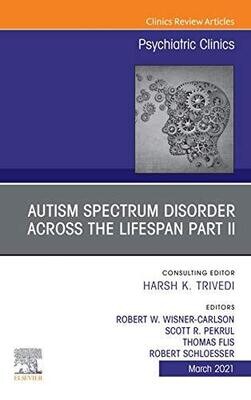
I received my Ebooks within 15 min. Thank you!
It was great service, I will highly recommend all of my colleagues
La compran fue muy fácil y la entrega súper rápida. El libro esta muy bien. Buenas explicaciones y muy buen contenido. Recomiendo mucho este sitio para comprar.
Great and fast like always!
Excellent service, very easy payment, super fast delivery. Excellent book to review, clinical cases with explanation.
About us

Medical eBook House
+447555747230
Medical eBook House is the Best online medical books resource which serves medical professionals in providing Ebooks, video courses/ Lectures of all kinds in various languages on their demand at very reasonable prices.
